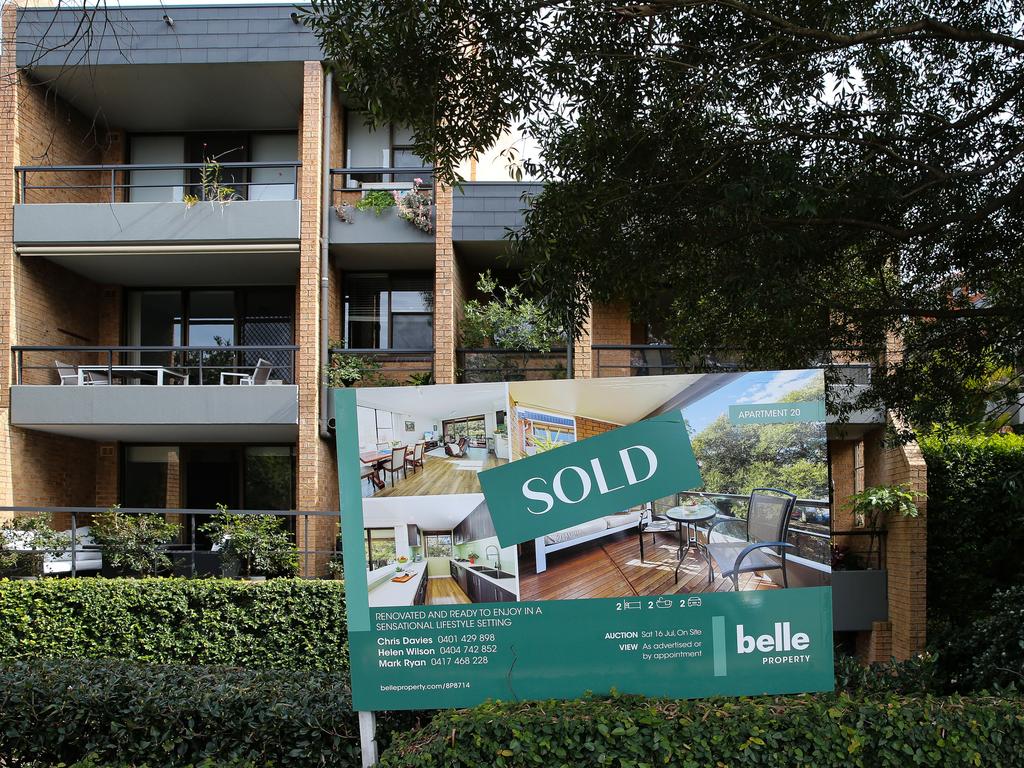Property investor act that’s screwing everyday Australians
Hard working Australians are being left renting forever thanks to one particular move by many property investors.

ANALYSIS
Affordable housing has long been an issue for millions of Australians. Despite this, beyond side policies such as first homebuyer grants and stamp duty concessions, housing has generally been an issue that has been left on the backburner in the world of federal politics.
But in recent months the issue of house and rent prices has been catapulted into the limelight and has stayed there. Looking at the numbers, its understandable why.
According to an analysis from research firm PropTrack, only 13 per cent of homes are affordable for a household on a median income at a national level, that is down from roughly 50 per cent at the turn of the millennium.
This comes despite state, territory and federal policymakers spending over $20 billion on support programs for first home buyers, which include but are not limited to, grants, stamp duty concessions and government backed mortgage schemes.

Yet despite expending an enormous sum of money, prospective first home buyers are worse off now than before the government started.
Instead of seeing increasing rates of home ownership over the past 30 years, a greater share of Australia’s overall housing stock has been taken by investors. But whose share of the housing stock pie has that come from?
Historic numbers
According to data from Australian Institute of Health and Welfare in 1994-95, 18.4 per cent of households rented their home from a private landlord. As of their latest data which covers up to the middle of 2020, that figure had risen to 26.2 per cent. While this 7.8 percentage point or 42.3 per cent increase in the proportion of housing stock owned by investors may not sound like much it is quite significant.
If we apply this figure to the overall number of households, there are around 811,000 more households renting from private landlords than there would be if the investor-owned proportion of occupied housing stock remained the same as it was in 1995.
It’s worth noting that even if the proportion of private landlord owned occupied housing stock remained the same as 1995, there would still be over 700,000 more households renting from private landlords today simply due to the growth in housing stock and the broader population.
While part of the rise in the proportion of property investor held occupied housing stock has come from public housing’s dwindling share of overall housing stock, 65.4 per cent of the growth in investor held housing stock has come from what would have historically been the share of would-be owner occupiers.
Investors shift gears
Back in the 1990s following the RBA cash rate being slashed from 17.0 per cent to as little as 4.75 per cent, there were great swathes of the nation’s property market which could on paper be purchased as positively geared investment properties.
Fast forward to 2023, a recent analysis by property research firm PropTrack found that based on a set scenario of a property investor having a 20 per cent deposit and the required out of pocket funds for transaction costs, 66.2 per cent of properties purchased nationally between February 2020 and June 2023 and then rented out would be negatively geared.
That figure rises to 87.5 per cent of properties covered by the analysis in Sydney and 83.3 per cent of those in Melbourne. At the other end of the spectrum, the analysis concluded that 34.1 per cent of properties would be negatively geared in this scenario in Darwin and 39.6 per cent in Perth.
What segment are investors buying in?
As one might imagine, the differences in costs and relative returns results in significant differences in what part of the market investors are buying when broken down by capital city. To help shed some light on that issue, PropTrack has provided data on which third of each capital city property market by value investors were most active in.
With Perth holding the title of lowest home prices for the five largest capital cities and the highest number of recently purchased positively geared properties based on PropTrack’s analysis, its perhaps unsurprising that it’s one of the few markets where the middle third of property by value is seeing the most activity.
Brisbane has also seen investors most active in the middle third of property transactions by value. However, this is arguably driven by a different set of circumstances. As a magnet for interstate migration and with its relative proximity to the most populous capitals, Brisbane is a popular target for investors, with its appeal further boosted by the perspective that the preparation for 2032 Olympics will provide additional upside for property prices.
For Sydney and Melbourne, the nation’s most expensive capitals and with some of the worst rental yields on offer, investors are most active in the cheapest third of the market.
Across the five largest capitals, the bottom two thirds of the market by value account for an average of 72.6 per cent of investor activity. While there are variations on whether the investors are more active in the bottom third or the middle third of the market by capital city, overall, they are frequently most active in segments where they would be competing with prospective first home buyers.
Looking ahead
While the debate over negative gearing, the capital gains tax discount and broader housing related policy will likely continue to dominate discourse in the halls of power in Canberra for the immediate future, what is far more concrete is the result of the current policy settings surrounding housing.
Recently departed billionaire investor and business partner of Warren Buffett, Charlie Munger once said: “Show me the incentive and I will show you the outcome.”
After almost 30 years of home ownership rates in a downtrend and home prices rising out of reach for many everyday Australians, the outcome of the current set of incentives is arguably rather clear.
As housing continues down the path to becoming what could be the political landmine issue for the next election, the big question for Australians is will those incentives change and if so, what are they going to look like?
Tarric Brooker is a freelance journalist and social commentator | @AvidCommentator






